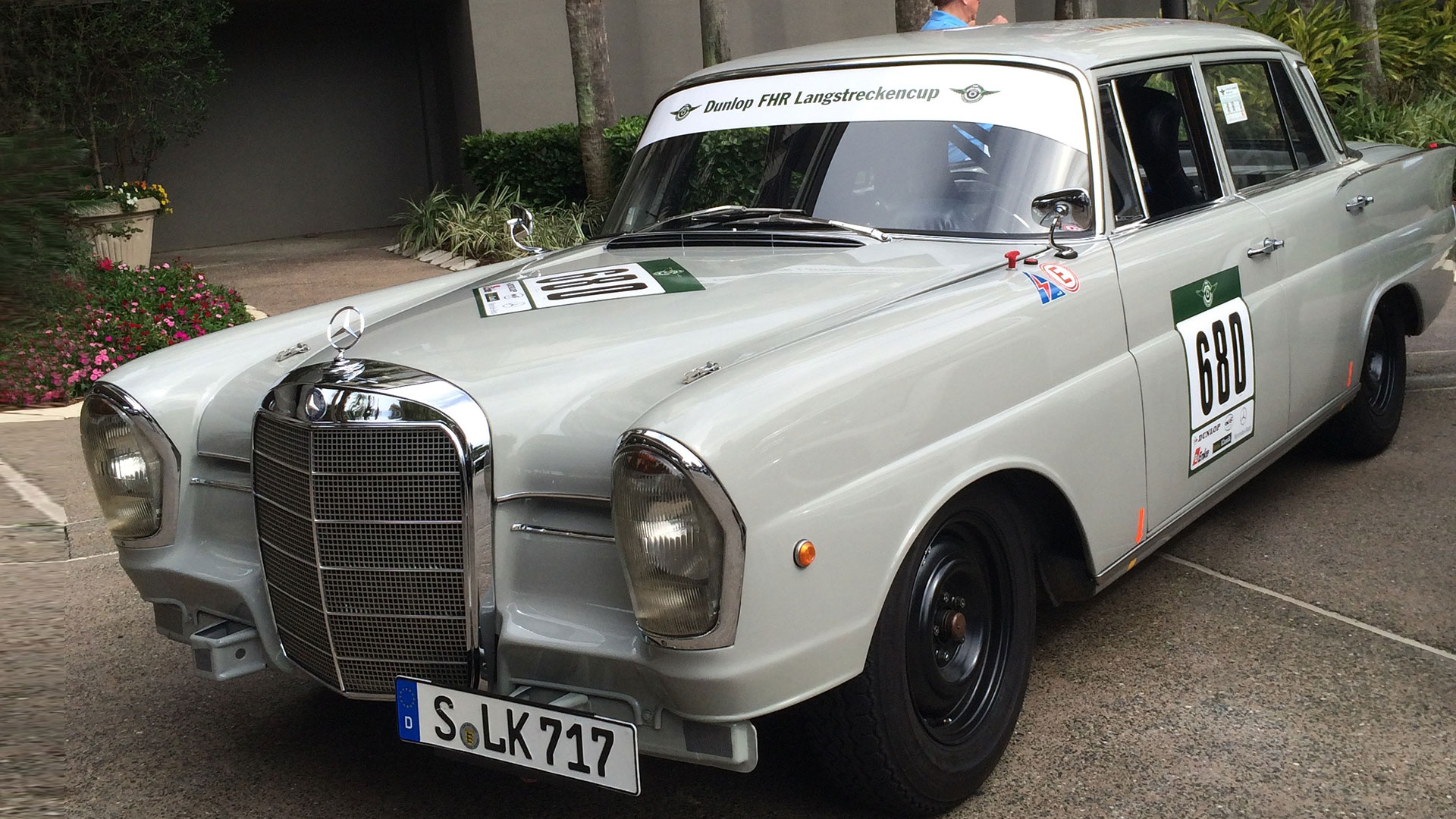

Though high-end sport and luxury cars are my general beat, I’ve made something of a sub-specialty out of driving vintage vehicles—especially those with a three-pointed star on their hoods. So when my friends from the Mercedes-Benz Classic Center dropped a line to let me know that they’d be bringing a rally-prepped 1963 220 SEb Heckflosse sedan to the Amelia Island Concours, I jumped at the opportunity to duck under its triangulated roll cage, slide into its period-incorrect racing seat, hit the starter on its 2.2-liter straight-six, and row my way through its delicate, long-throw, four-speed manual transmission.
All of which begged the question: Why would Mercedes create a rally racing version of its snobbish S-Class, even in the generally WTF?-filled 1960s? And why would the monomaniacal craftspeople at Classic Center go to the trouble of producing a polished, nut-perfect homage to this particular vehicle? Not to go all Martin Buber on this car’s fin-tailed grey ass but, why does any of this exist?
“After the horific LeMans accident in 1955, racing was forbidden by the Mercedes board, and the brand focused all of its energies making production cars as safe as possible,” says Classic Center workshop project manager Nate Lander as we blast along Amelia Island’s narrow roads, congested with traffic from the annual Concours d’Elegance. “But they got around it by participating in endurance rallies, 3000-mile races through places like Argentina over mud, dirt, gravel, and asphalt.”
For a race like that, a car with some heft and creature comforts was actually useful. “The seats are cloth because [with] leather, in the heat, you’re just sitting in your own funk,” Lander says, running a hand over the fabric. “These cars even had a heater for cold nights.” Like a plastic rose in an airplane bathroom, the factory spec wood-trimmed dash adds a touch of class to what must have been the world’s most miserable road trip.
I wind the car through its gears, ever aware of a pricey Ferrari Daytona, cheap (but running!) Triumph TR8 Convertible, and several examples of pastel-adorned and likely drunk golfing types weaving through the Island’s roundabouts. The relatively slow speeds may be a blessing, however, because despite a chassis stiffened by a roll cage and the surprisingly well-planted rally suspension set up, the 220’s steering is about as sensitive as Donald Trump at a quinceañera.
“Mercedes rejected rack-and-pinion steering in these luxury cars because it provided too much feedback,” Sander says. “The roads back then weren’t nearly as good as they are now, and the recirculating ball system they used instead kept drivers from having to make constant adjustments, so they were less fatigued. Same reason why we had these giant steering wheels.” He points to the wheel, with a circumference more Magellan than Momo.

A tuned 135 hp output, and almost complete lack of interior beyond the two front seats, takes the big luxury sedan down to about the same power-to-weight ratio occupied by the modern Mini Cooper Hardtop. The fact that it’s forty inches longer than a Mini, and infinitely more charming, makes tossing it around all the more enjoyable, terrifying, and awkward. Somehow, 135 hp feels like enough engine and sixteen feet of length feels appropriately raceable. No wonder these vehicles had such a winning history.
“In the 1964 Argentine Touring Car Gran Prix, these cars took first, second, and third place,” Lander says.
With its four-point harness, over-engineered indestructibility, and immense crumple zones, I initially thought this particular S might be better suited to the demolition derby. But emerging from the car after our spirited run, my opinion has changed. Perhaps my denigration of all racing as “insolent noise” was ill-informed. Sensing this, Lander offers up the opportunity to drive the car in an upcoming 1000-mile rally in Colorado. I chuckle. My opinion has certainly not changed that much.